#modern dutch architecture
Explore tagged Tumblr posts
Text
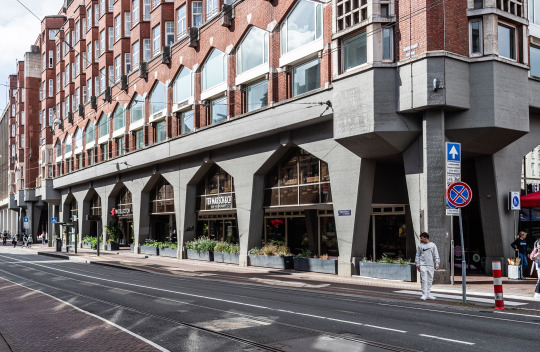
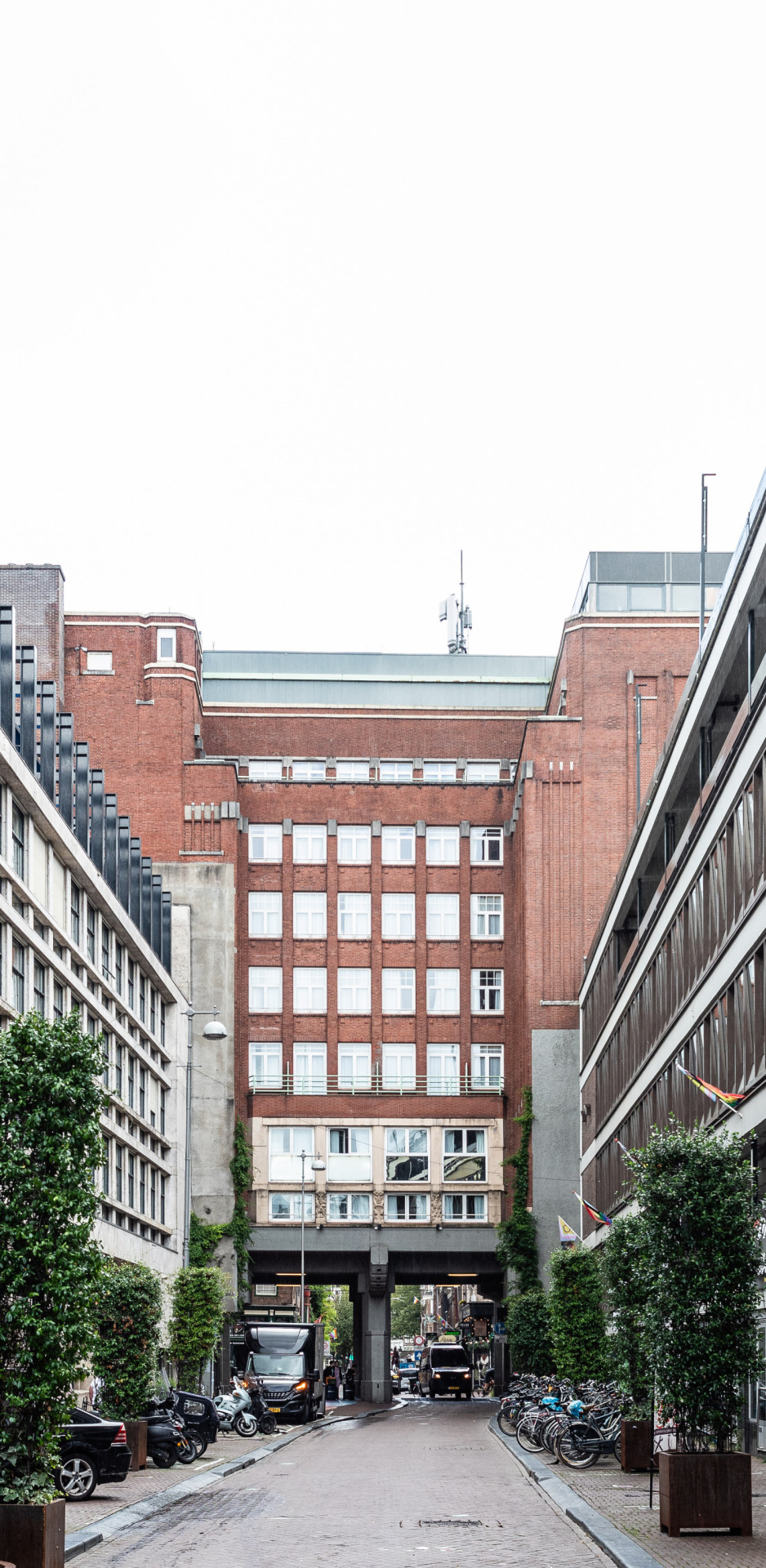

vijzelstraat // amsterdam gouden bocht
nh collection amsterdam flower market the former carltonhotel
architect: gerrit jan rutgers
completion: 1928
the large hotel complex was built in the style of the amsterdam school, a kind of brick impressionism in the netherlands and especially in the city of amsterdam, and thus belongs to the modernist style. as the complex extends over several streets and is completely enclosed by the surrounding buildings, its size is hardly noticeable at first glance. it is also due to the narrow streets that many details of the building façade and the overall effect cannot really be seen, which is a great shame.
but it's still worth a visit.
der große hotekomplex, wurde im stil der amsterdamer schule errichtet, einer spielart des backsteinsimpressionismus in den niederlanden und vor allem im bereich der stadt amsterdam und ist damit zugehörig der moderne. da der komplex sich über mehrere straßen erstreckt und komplett von umgebenden gebäuden eingeschlossen ist, erkennt man die größe auf den ersten blick kaum. ebenso ist es der engen bebauung geschuldet, dass man viele details des gebäudefassade oder die gesamtwirkung auch optisch nicht wirklich erfassen kann, was sehr schade ist.
ein besuch lohnt sich aber natürlich trotzdem.
#amsterdam#dutch architecture#photograpy#architecture#architecture photography#design#urban#moderne#brick impressionism#amsterdam school#amsterdamse school bouwstijl#neues bauen#modern brick architecture#urban photography#gerrit jan rutgers#carltonhotel#nh collection amsterdam flower market#brick architecture#modern dutch architecture
170 notes
·
View notes
Text
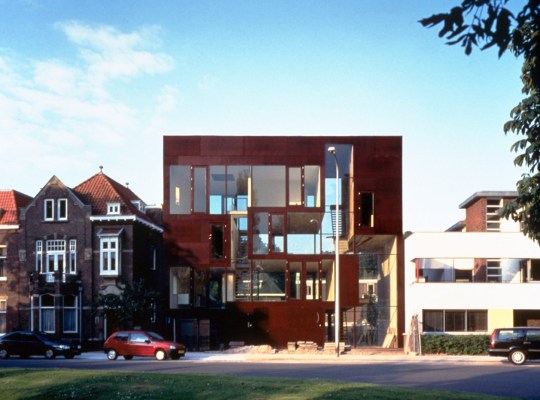





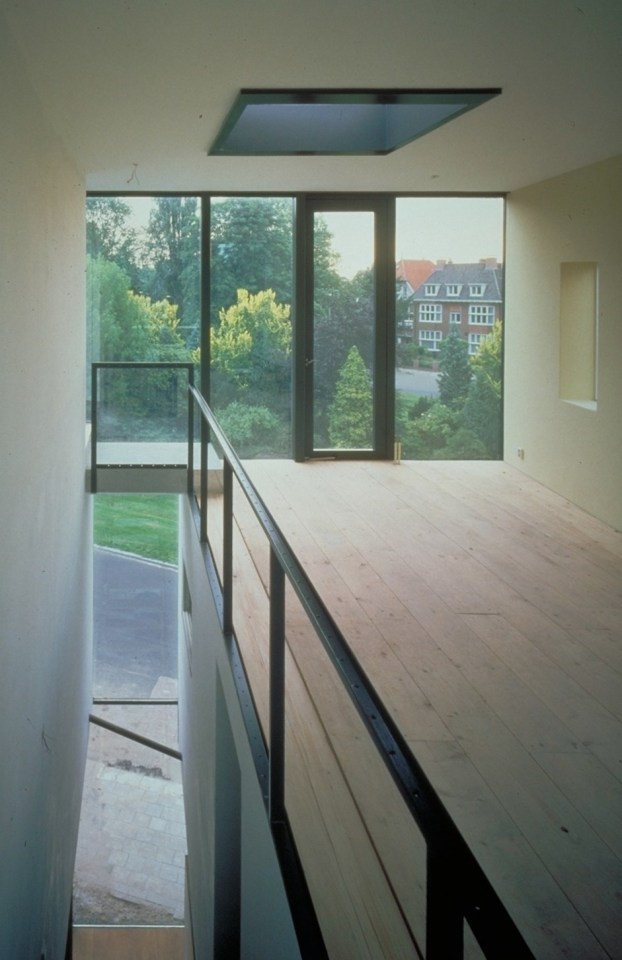
Double House, Utrecht - MVRDV
#MVRDV#architecture#design#building#modern architecture#interiors#minimal#house#modern#house design#postmodernism#glass#facade#windows#metal#metal cladding#living room#cool design#iconic#box#form#stairs#osb#timber#concrete#levels#netherlands#dutch design#holland#utrecht
138 notes
·
View notes
Text
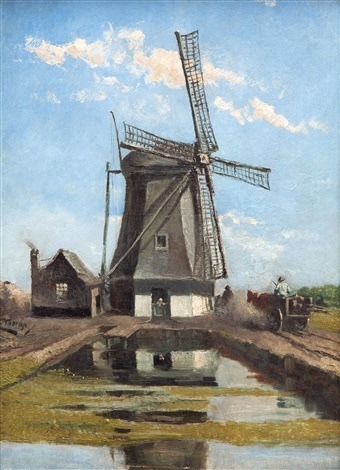

Jan Toorop, A windmill near the water, 1880
Vincent van Gogh, Le Moulin de la Galette, Paris, Autumn, 1886
#jan toorop#windmills#vincent van gogh#montmartre#france#dutch art#dutch painter#dutch artist#dutch painting#landscape#architecture#post impressionism#post impressionist art#modern art#art history#aesthetictumblr#tumblraesthetic#tumblrpic#tumblrpictures#tumblr art#aesthetic#beauty#tumblrstyle
26 notes
·
View notes
Text
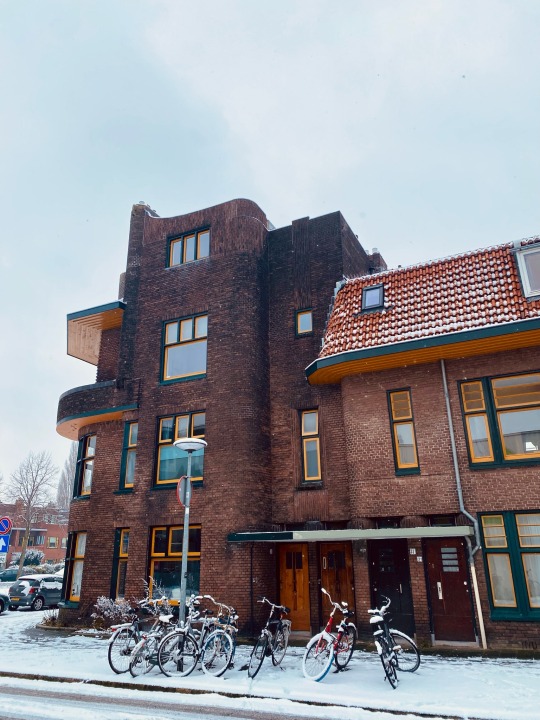
12/02/2025
snow in the city
#groningen#architecture#amsterdamse school#amsterdam school#snow#dutch architecture#dutch city#city#city architecture#architecture photography#photography#modernism#modernist architecture
5 notes
·
View notes
Text
autumn court inspired by germanic folklore & fairytales, my beloved
#the autumn court in general owns my heart. everyone else is in a romance novel & they're in game of thrones.#the temptation to develop the entire court and its regions.#imagine lesser fae based on the waldleute & changelings (both very fitting for autumn)#feldgeister hidden in the rows of corn. the bergmönch in the mountains. yule witches in their huts.#wolpetingers rustling in the trees. eris' 12 helhonds.#the lorelei singing atop the rocks by the sea.#gothic bavarian-style architecture. viennese-baroque palaces. wild countryside with fruitful orchards / harvests / and parades.#ACTUALLY! pied piper allegory for eris - for his persuasions; schemes; and promises.#just... grimm vibes.#tbd.#adding to that thought: modern verse eris is of bavarian/dutch descent.#eris' father is german & his mother is flemish-dutch.#i could talk about this for days.
13 notes
·
View notes
Text
Exploring Belgium: A Comprehensive Travel Guide
Belgium, a charming country nestled in Western Europe, offers a rich tapestry of history, culture, and modernity. This guide will take you through Belgium’s history, colonial past, political landscape, education system, and practical travel information, ensuring a delightful and informed visit. A Brief History of Belgium Belgium’s history is a blend of influences from Roman times to modern-day…
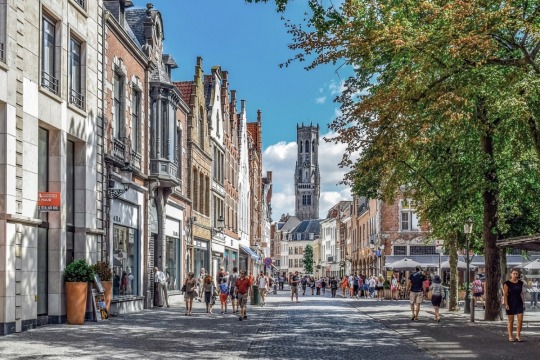
View On WordPress
#a charming country nestled in Western Europe#accommodation#adventure#africa#among other religious communities. Food and Culture Belgium’s cuisine is famous for waffles#and a variety of local beers. Belgium offers a unique blend of history#and Antwerp International Airport (ANR). The country has an excellent public transportation system#and beer. Cultural influences are diverse#and buses. Roads The road infrastructure is well-developed#and French. Belgium gained independence from the Netherlands in 1830#and German in a small eastern region. Is Belgium expensive to visit? Belgium can be pricey#and German). Festivals#and German. Dutch is predominant in Flanders#and historical buildings. Ghent: Famous for its medieval architecture and vibrant cultural scene. Antwerp: Renowned for its diamond district#and major credit cards are widely accepted. Top Places to Visit Brussels: The capital city#and Manneken Pis. Bruges: A picturesque medieval city with canals#and many other countries can enter Belgium visa-free for short stays. Others may need a Schengen visa. The currency is the Euro (EUR)#and modern attractions#and modernity. This guide will take you through Belgium’s history#and music play significant roles in Belgian culture. FAQs about Belgium What languages are spoken in Belgium? Belgium has three official lan#and numerous tours offer tastings and factory visits. Beer Tours: Belgian beer is world-renowned#and practical travel information#and road conditions are generally good. Religion Belgium is predominantly Roman Catholic#and the Brussels-Capital Region. The political landscape is complex#and the stunning Cathedral of Our Lady. Leuven: A lively university town with rich historical sites. Activities for Tourists Chocolate Tasti#and transportation can be expensive#art#Atomium#Austrian#be aware of pickpockets and avoid less-populated areas at night. Accommodation Affordability Belgium offers a range of accommodation options
0 notes
Text
Cécile van Hanja (Dutch, 1964), Frozen Modernism, 2023. Acrylic on canvas, 150 × 110 cm.

Cécile van Hanja - Frozen Modernism, 2023
160 notes
·
View notes
Text
Work acquaintance, ostensibly as a joke about me and my interests, asked if I had any educational reading recommendations about "Santa's sleigh"
So, to pass the time, I thought we'd have a dialogue about the history of urban vehicularization, pedestrian encounters with vehicles, and control of space and mobility, through the "vehicle" (pun intended) of a case study of carriages and sleighs in eighteenth-century Amsterdam.
---
And none of this is to be taken seriously, I'm just saying words recreationally.
But Amsterdam is important in the history of urban space. It was the site of early speed limit regulations for vehicles: In 1681, a bylaw limited vehicle speed to walking pace (stapvoets), and a 1696 deposition describes the servants of a sheriff stopping a driver for driving too fast. By the 1770s, the sleigh-man's guild had 285 sleigh-men active year-round, not counting unregistered personal sleighs, or those who used sleighs over snow in winter. The (colonialism-fueled) expansion of the city's infrastructure (in the context of maritime trade and East India Company profits) allowed sudden, dramatic architectural expansion, though there was uneven adoption of new transportation methods of wheeled vehicles in newly-built edges of the urban area (where textile factories were situated) while maintaining the architecture of the dense streets of the medieval city core, so that sleighs and carriages existed side-by-side in a way that was distinct from the streets of Paris and London.
In 1790, visiting German scientist Georg Forster described Amsterdam as such: "The whole day long, a continuous thunderous roaring dominates. The manifold carriages of mayors, councilors, state officials, directors of the East India Company, physicians and the lavishly rich, the unremitting transport of goods [...] obstruct the way of passage and cause a constant yelling and rumbling [...]."
But history scholar Bob Pierik (in an article that opens with Forster's lamentation) describes how Amsterdam was an early site of "vehicularization" and related street regulations, and he finds this notable and worth considering because it anticipated and predated the more famous and more widely discussed urban regulations and policing of properly-industrialized nineteenth-century London, which allows us to perhaps rethink the historiography and "teleological narrative" of modernity.
Since vehicles, pedestrians, and their attendant regulations were experimented with in the Dutch metropole decades before the mechanized transportation and "politics of paving" in Victorian Britain, there were what Pierik calls "multiple modernities" existing simultaneously in the streets of early modern Amsterdam (a "proper metropolis" at that time).
---
Evidently, "sleighs had been an important part of street life in Amsterdam long before coaches and chaises." Indeed, Pierik invokes the observation of English author Samuel Ireland from 1789, describing a visit to Amsterdam: "[C]arriages with wheels, except for the use of the nobility and gentry, were not suffered here for many years […]. A sleigh, as the Dutch term it (the French a traineau or pot de chambre) is now in use: it is the body of a coach, without wheels […]."
And guess what? They dragged those sleighs over pavement. No wheels, but only "an oily cloth (a smeerlap) was used to smoothen the passage."
A piece of rhyming graffiti, written on a wagon, and collected by Hieronymus Sweerts between 1683 and 1690, reads:
Who drives fast make a quick start
But easily loses their horse and cart
Careful and sen-
Sible is a good carriage man.
(For all excerpts and arguments here, by the way, see: Bob Pierik. "Coaches, Sleighs, and Speed in the Street: "Vehicularization" in Early Modern Amsterdam." Journal of Urban History, Volume 50, Issue 4. First published online 2 September 2022. All of this research was done by Pierik.)
Along with sleighs for transporting goods and products, there were sleighs for personal transport: a toeslee (closed sleigh) and koetsslee (coach sleigh).
---
And what of the pedestrian? Early on, at least in the Netherlands, vehicles were perceived as dangerous to pedestrians, and it could apparently be seen as arrogant to flaunt aristocratic wealth by gallavanting around in an expensive personal carriage in the city center, and so regulations and public opinion seem to indicate that pedestrian right-of-way was prioritized. An Amsterdam bylaw from 1528 indicated that drivers of sleighs could not sit upon their vehicle but had to walk beside it, because:
"[D]riving caused great disorder, often mixed with malice, as people, specifically women and children, are at great danger of being driven over."
An important city bylaw in 1634 banned the use of coaches within city walls. But the prohibition was gradually loosened, such that conflict between coach-drivers and pedestrians was frequently mentioned in depositions. But by the 1730s, something had changed. In Pierik's words:
[Quote.] Pedestrians now shared space with vehicles and had a new responsibility to protect themselves […]. [T]he language used in Bicker’s chronicle is very telling: In 1734, exactly a century after the vehicle ban, he wrote of a coachman who “had the misfortune of driving over a poor woman who died shortly thereafter.” Here, rather than the “women and children first” rhetoric that we have seen in the sixteenth-century regulations on the sleigh-men in the previous section, the coachman was also presented as a victim, and the right of the coach’s presence on the streets remained undisputed. Similarly, in 1746, Bicker Raije wrote of a nine- or ten-year-old boy who was “negligently watching around him” moments before he was killed by a sleigh horse. [End quote.]
The trend continued, and in the nineteenth century, British authorities would notoriously enact sweeping policies to control mobility in and access to urban space, in ways that prioritized "economic" activity while reinforcing class hierarchies. In fact, Pierik sees this vehicularization of the early modern city as "at once a civilizing and a colonizing project" in the same vein as what Koslofsky described as "nocturnalization," or the way in which, in London and Paris, "the elites of the court and the city colonized the urban night" with their affordance of transportation and a mobility not always shared with those lower in the hierarchies.
---
We are, of course, reminded of another aristocratic figure who, traveling through the night, engaged in this civilizing mission of nocturnalization and colonized public space with their vehicle. Someone who, like the early modern vehicle regulations of Amsterdam, is associated with Dutch tradition. Someone whose persona is closely connected to mobility, even hyper-mobility, drawn forth by their sleigh:
Santa Claus.
55 notes
·
View notes
Photo

Borobudur
The Temple of Borobudur or sometimes "Barabudur" is a Mahayana Buddhist temple located close to Muntilan on the island of Java in Indonesia. Built during the rule of the Sailendra Dynasty (c. 650-1025 CE), Borobudur remains the world's largest Buddhist temple. The Buddhists among the Javanese population performed pilgrimages and other rituals at Borobudur until around the 14th and 15th centuries CE when the temple was abandoned as many Javanese converted to Islam. Rediscovered in 1814 CE, Borobudur has since then been the subject of immense research and archaeological investigations by the Dutch and Javanese. UNESCO designated Borobudur as a World Heritage Site in 1991 CE following a restoration in the 1970s and 1980s CE overseen by President Suharto (1967-1998 CE) and UNESCO, and the iconic temple continues to play a powerful role in shaping Indonesian aesthetics, architecture, and cultural identity. Borobudur is the most visited tourist site in Indonesia.
Geography & History
Borobudur is located about 40 km (25 miles) to the northwest of Yogyakarta and some 86 km (53 miles) west of the city of Surakarta in central Java. The temple lies in an area between two volcanoes - Mt. Sundoro-Sumbing and Mt. Merbabu-Merapi - as well as two rivers - Progo and Elo. Borobudur is situated very close to two other Buddhist temples in the Kedu Plain: Pawon and Mendut. Scholars and archaeologists surmise that some sort of relationship must have existed between the temples as all three are positioned along a straight line. However, what this signifies is still a matter of scholarly debate. What is known is that the ancient and medieval Javanese, whether Hindu or Buddhist, associated the Kedu Plain with tremendous agricultural production, and it was thus considered one of the most sacred places on the island of Java. Ancient peoples regarded the two rivers as especially auspicious as they evoked the sacred Ganges and Yamuna rivers in what is present-day India. Not surprisingly, given the area's favorability, the Hindu Gunung Wukir temple sanctuary, which dates to c. 732 CE, lies only 10 km (6 miles) west of Borobudur in the Kedu Plain too.
The period in which the Javanese constructed Borobudur is shrouded in legend and mystery. No records pertaining to its construction or purpose exist, and dating the temple is based on artistic comparisons of reliefs and inscriptions found in Indonesia and elsewhere throughout Southeast Asia. Strong cultural and religious influenced arrived in what is now present-day Indonesia from the Indian subcontinent beginning around the 1st century CE. This influence grew rapidly from c. 400 CE onwards. Hindu and Buddhist merchants and traders settled in the region, intermarried with the local population, and facilitated long-distance trading relations between the indigenous Javanese and ancient India. Over the centuries, the Javanese blended the culture and religions of ancient India with their own.
The name "Borobudur" itself is the subject of intense scholarly debate and is a lingering mystery. Some scholars contend that the name stems from the Sanskrit Vihara Buddha Uhr or the "Buddhist Monastery on a Hill," while others, in turn, argue that Budur is nothing more than a Javanese place name. A stone tablet dating from 842 CE makes mention of Bhumisambharabhudara or the "Mountain of Virtues of Ten Stages of the Boddhisattva." It is probable that the name "Borobudur" could be related to "Bharabhudara."
Modern historians have all disagreed amongst each other as to the political and cultural events that led to Borobudur's construction as well. It is possible that the Hindu Sanjaya dynasty initially began construction of a Shivaite temple on the spot where Borobudur now sits around c. 775 CE and that they were unable to complete their temple as they were driven out of the area by the Sailendra dynasty. (It should be noted, however, that other Javanese historians see the Sailendra and Sanjaya dynasties as one and the same family and that religious patronage simply changed as a result of personal belief. The general consensus is that there were two rival dynasties supporting different faiths.)
Archaeological and scholarly consensus places the end of Borobudur's construction around c. 800-825 CE. King Samaratungga (r. c. 790-835 CE?) is traditionally regarded as the Javanese king who oversaw the completion of Borobudur's construction. Buddhist kings, like Samaratungga, were the rivals of the Hindu Sanjaya dynasty for power within the Mataram kingdom in central Java. The Hindu Javanese under the Sanjaya dynasty constructed Prambanan - Indonesia's largest Hindu temple, located some 19 km (12 miles) to the west of Borobudur- in the same century as Borobudur, and it is entirely possible that Prambanan's construction was a political and cultural response to that of Borobudur.
What is known is that Buddhists made pilgrimages and took part in Buddhist rituals at Borobudur during the early medieval period until the temple was abandoned at some point during the 1400s CE. The root causes for the abandonment of Borobudur are moreover debated, and the reasons why the temple was ultimately abandoned remains unknown. It is known that in the 10th or 11th century CE, the capital of the Mataram Kingdom moved eastwards away from Borobudur due to volcanic eruptions, which may have diminished Borobudur as a center of pilgrimage. Although Arab, Persian, and Gujarati traders brought Islam to what is present-day Indonesia as early as the 8th and 9th centuries CE, the acceleration of Javanese conversion to Islam began to increase rapidly only in the 15th century CE. As the Javanese population accepted Islam en masse, it makes sense that Borobudur would lessen in importance. Over the following centuries, earthquakes, volcanic eruption, and rainforest growth hid Borobudur from the Javanese, rendering it inaccessible. There is evidence, nonetheless, that Borobudur never left the collective cultural consciousness of the Javanese people. Even after their conversion to Islam, later Javanese stories and myths expressed the temple's association with mystery and negative energies.
In 1814, the Lieutenant Governor-General Thomas Stamford Raffles (1781-1826 CE) who oversaw the brief British occupation of the Dutch East Indes permitted the Dutch explorer Hermann Cornelius (1774-1833 CE) to organize an expedition to find and locate Borobudur, which he did successfully the same year. In the years following Borobudur's rediscovery, the government of the Dutch East Indies commissioned and permitted archaeological studies of the temple, but looting was a major problem in the 19th and early 20th century CE. Experts recommended that Borobudur be left intact in situ, and the first restoration efforts lasted from 1907 to 1911 CE. Today, Borobudur is once again a site of Buddhist pilgrimage and a major tourist destination in Southeast Asia, but Indonesian officials remain worried about damage caused by the foot traffic at the temple, as well as lingering environmental and security issues.
Continue reading...
42 notes
·
View notes
Text


Herman Hertzberger (*1932) unquestionably is one of the most prominent exponents of Dutch Structuralism, a movement spearheaded by Aldo van Eyck who very harshly judged the schematic postwar modernism represented by the Congrès internationaux d’architecture moderne (CIAM) and its secretary Sigfried Giedion. At the 11th CIAM congress in Otterlo, the Netherlands, Van Eyck roundly rejected Giedion’s space-time concept by stating that „whatever space and time may mean - location and incident mean more, for in the human imagination space appears as location and time as incident.“ Hetzberger followed in Van Eyck’s vein and sought to provide inhabitants with buildings that offered flexibility and fostered human interaction.
The renowned German architectural photographer Klaus Kinold (1939-2021) must have been intrigued by Hertzberger’s architecture since he captured a great deal of them throughout the years. For many years the Hirmer Verlag has been publishing high-quality volumes devoted to Kinold’s photographs of one architect’s oeuvre. The most recent volume „Herman Hertzberger: Strukturalismus/Structuralism“ features Kinold's photographs of five of Hertzberger’s major works, namely the Centraal Beheer in Apeldoorn, the Vredenburg Music Center in Utrecht, the Apollo and De Evenaar schools in Amsterdam and the Ministry of Social Affairs and Employment in Den Haag. Apparently Kinold was (justly) very fond of the social dimension of Hetzberger’s architecture as he shows the buildings as lively places, crowded with pupils, staff or strollers. What immediately strikes the eye is Hertzberger’s predominant use of concrete blocks, a „poor“ material consciously used as part of his commitment to simple materials as Wolfgang Jean Stock explains in his text about the Centraal Beheer. The former’s texts accompany each of the covered projects and provide concise information about e.g. underlying design principles and structuralist characteristics.
Although Hertzberger’s key projects are well-known, the present book thanks to Klaus Kinold’s photographs and Stock’s lucid texts demonstrates why they are internationally revered examples of Dutch Structuralism. A handsome publication!
#herman hertzberger#klaus kinold#architecture#netherlands#structuralism#architecture book#monograph#architecture photography
20 notes
·
View notes
Text
Brutalist boomerang!

The Johnson Wax Office Building and Factory in Mijdrecht, Netherlands, by Dutch architect Huig Maaskant, 1964.
9 notes
·
View notes
Text
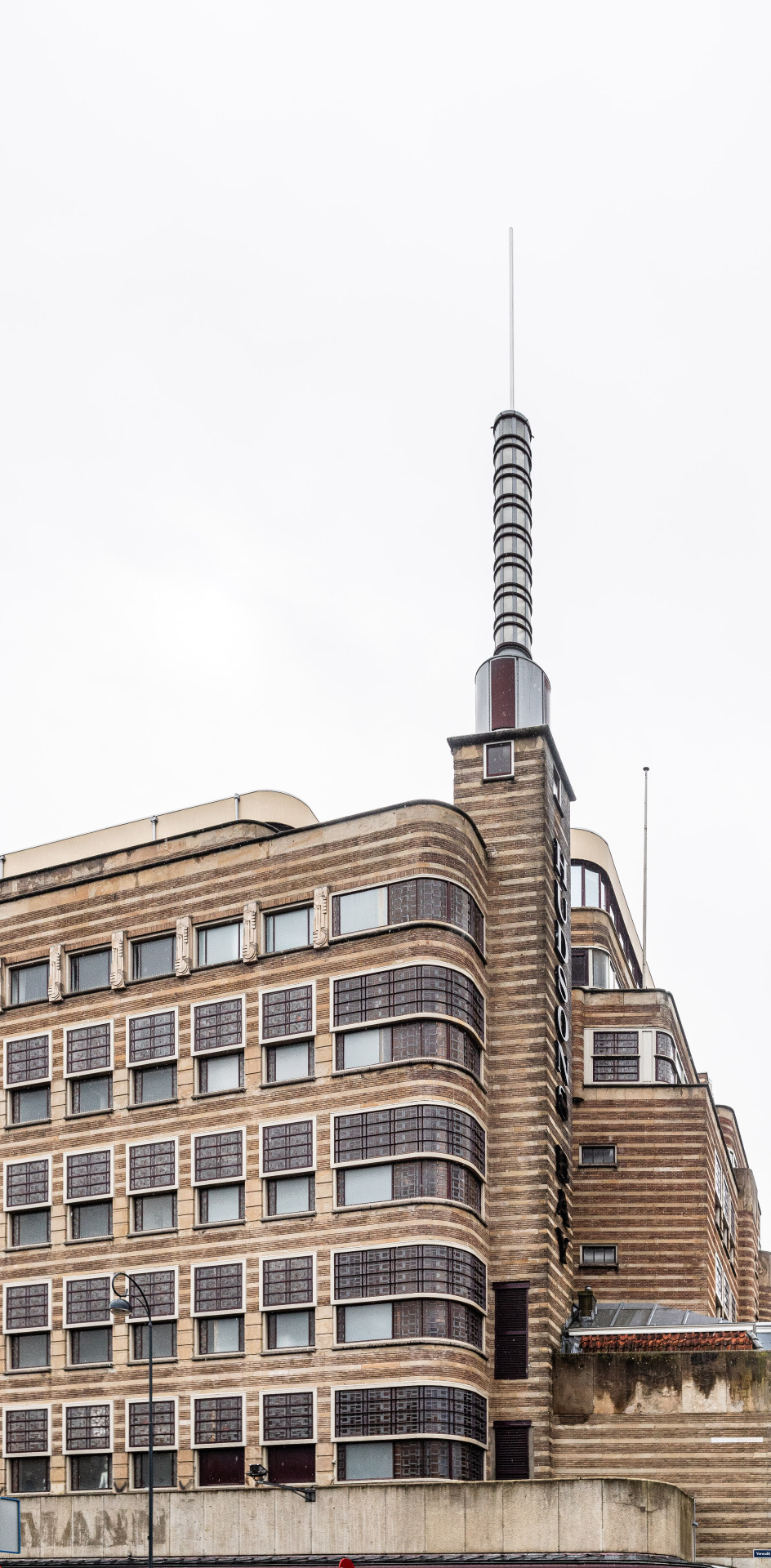
warenhuis // haarlem
architect: jan kuijt
completion: 1934
originally built for vroom & dreesmann in the style of the amsterdam school, this listed building is now home to hema.
das warenhaus wurde ursprünglich für vroom & dreesmann im stil der amsterdamer schule erbaut. inzwischen steht es unter denkmalschutz und beherbergt heute hema.
#photography#architecture#architecture photography#urban#design#haarlem#amsterdam school#neues bauen#art deco#neue sachlichkeit#nieuwe zakelijkheid#moderne#dutch#dutch architecture#modern dutch architecture#modern architecture#jan kuijt#vroom & dreesmann
121 notes
·
View notes
Text







HipHouse, Zwolle, Holland - Atelier Kempe Thill
#Atelier Kempe Thill#architecture#design#building#modern architecture#interiors#minimal#house#modern#contemporary#minimalist#glass#box#glassy#transparent#housing#apartments#apartment block#cool design#beautiful buildings#sleek#light#concrete#metal#holland#european architecture#dutch design#design blog#architectural photography#atrium
56 notes
·
View notes
Text
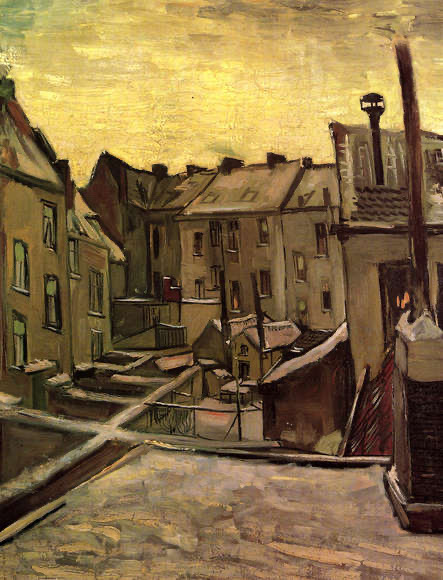
Vincent van Gogh
Achterkanten van huizen
Dec. 1885-Feb. 1886
#van gogh#vincent van gogh#post impressionism#post impressionist art#post impressionist painter#dutch artist#dutch art#dutch painter#architecture#modern art#art history#aesthetictumblr#tumblraesthetic#tumblrpictures#tumblr art#tumblrpic#van gogh aesthetic#aesthetic#tumblrstyle#artists on tumblr#tumblrposts
52 notes
·
View notes
Text
This week on The Nordroom

IKEA HÖSTAGILLE: A Fall Collection with Halloween Decorations 2024

The Flint House Kitchen Extension by deVOL

Bold Color Accents in a Dutch Family Home
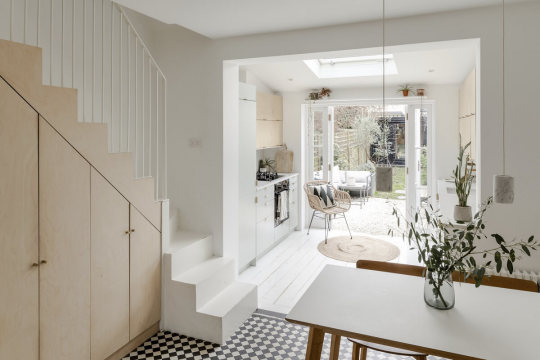
Light and Modern Spaces in a Small Victorian House
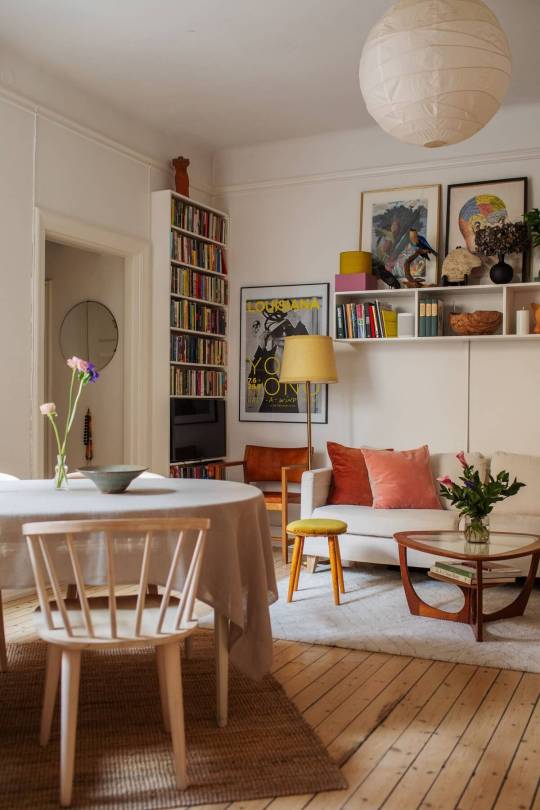
Period Details and Light Rooms in a Scandinavian Apartment

A Modern Duplex Apartment in The Netherlands

A Modern Barn House in the English Countryside

A Serene Modern Home in a Former Factory Building
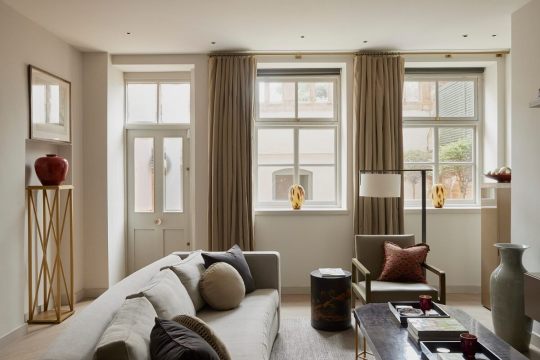
Modern Interiors in an Architectural 19th Century Building
71 notes
·
View notes
Text
Star League Department of Stellar Cartography System Profile:
Merdengard
Star Type: K3V
Charge Time: 194 hours
Transit Time: 4.62 days
Safe Jump Distance: 386,486,041 km
Mass: 0.70
Luminosity: 0.335
Radius: 0.65
Temp: 4,480.00 K
Inner Life Zone Edge (km/AU): 37,332,074 / 0.251 (Avg Temp: 308.21 K)
Outer Life Zone Edge (km/AU): 76,400,524 / 0.513 (Avg Temp: 274.02 K)
Merdengard II (Merdengard):
Diameter: 15500 km
Density: 5.328 g/cm3
Gravity: 1.07 G (10.55 m/s²)
Escape Velocity: 12794 m/s
Orbital Velocity: 9048 m/s
Day Length: 22 hours
Year Length: 163 days
Moons: 0
Atmospheric Pressure: Normal
Surface Water: 80%
Atmosphere: Breathable
Equatorial Temperature: Low = ~287° K / 14° C
Climatic Zone 6 (Equatorial): avg temp - 287° K; dominant terrain/weather: Evergreen Forest/Rain & Fog
Climatic Zone 5: avg temp - 282 K; dominant terrain/weather: Evergreen Forest/Rain & Fog
Climatic Zone 4: avg temp - 277 K; dominant terrain/weather: Evergreen Forest/Fog+Hail+Rain+Snow)
Climatic Zone 3: avg temp - 272 K; dominant terrain/weather: Evergreen Forest+Tundra/Fog+Hail+Rain+Snow+Extreme Temperatures [Cold])
Climatic Zone 2: avg temp - 267 K; dominant terrain/weather: Tundra+Snow Field+Glacier/Hail+Snow+Extreme Temperatures [Cold])
Climatic Zone 1 (Polar): avg temp - 262 K; dominant terrain/weather: Snow Field+Glacier/Hail+Snow+Extreme Temperatures [Cold])
Highest Native Life: Mammals (“Gewitterfuchs”)
Special/Notable Features:
> Hostile Life Form ("Calamun")
> Star League Facility (occupied; Castle Erebor, ex-SLDF Castle Brian, currently in use by LCAF; HQ for planetary garrison)
> Lost Colony (early FWL colony misjump under CPT Eloise Marten, colony of "Marten's Landing" founded, joined LC after a century of no contact with the FWL)
Primary Agricultural Export: "Bluteispflaume"
Landmasses: 5 (+ significant archipelago in western ocean)
Colony History: Pre-Star League
Planetary Population: 1.2 billion
Capital City: New Bremen
Major Cities: Marten's Landing, Nova Canopus, Mötz-Hanberg, Eisenstadt
HPG Class: A
Recharge Station(s): Zenith, Nadir
USILR Codes (Socio-Economic Levels): A-B-D-A-B
Primary Languages: German, Dutch, Czech, English, other
Government Type: Representative Democracy
Planetary Leader (3153): Chancellor Willem T. Sonnhild
Representative to the Estates General (3153): Thalia Marten
Military Commander (3153): Generalleutnant Gabriel Christopher Bisclavret von Thiess III
+++++++++++
Commonwealth Ministry of Tourism Profile: Merdengard (below):
Welcome to Merdengard!
A chilly world of snowy evergreen forests, misty mountains, awe-inspiring glaciers and fjords, and vibrant culture, Merdengard is a hidden gem in the Lyran Commonwealth. Known for its breathtaking natural beauty, unique wildlife, and rich history, this planet offers something for every traveler. Whether you're seeking adventure, relaxation, or a taste of local culture, Merdengard promises an unforgettable experience.
---
Key Attractions
1. New Bremen
- Description: The planetary capital and cultural heart of Merdengard, New Bremen is a bustling metropolis located on the largest island of the northwestern archipelago. The city is a blend of modern architecture and traditional Lyran design, with towering skyscrapers overlooking cobblestone streets and canals.
- Highlights:
- Planetary Congress: Guided tours and public viewing areas allow visitors to witness a genuine democracy in action.
- The Grand Plaza: A sprawling public square surrounded by cafes, theaters, and art galleries.
- The Lyran Gardens: A massive botanical garden showcasing native flora, including the famous Bluteispflaume trees.
---
2. Marten’s Landing
- Description: The site of the original FWL colony, Marten’s Landing is now the planet’s largest tourist hub and "second city." Its historic district preserves the architecture and culture of the early settlers, while its modern areas are filled with luxury hotels, shopping districts, and entertainment venues.
- Highlights:
- Colonial Museum: Learn about the lost FWL colony and the founding of Marten’s Landing through interactive exhibits and artifacts.
- Marten’s Port: The largest tourist DropShip port on the planet, offering easy access to off-world visitors.
- The Old Market: A vibrant bazaar where you can sample local delicacies, including adernwein and blutkognak, and shop for handmade crafts.
---
3. Mötz-Hanberg
- Description: Nestled in the southern mountains, Mötz-Hanberg is a picturesque city known for its prestigious university and stunning alpine scenery. The city is a hub for academics, adventurers, and nature lovers.
- Highlights:
- University of Mötz-Hanberg: One of the premier educational institutions on the planet, offering public lectures and cultural events.
- Calamun Taming Tradition: Witness the daring (and often humorous) attempts by students to tame the local Calamun, a griffon-like creature native to the region.
- Mountain Trails: Explore the surrounding peaks and forests, home to the iconic Gewitterfuchs and other native wildlife.
---
4. Eisenstadt
- Description: The industrial powerhouse of Merdengard, Eisenstadt is a sprawling city of factories, warehouses, and commercial DropShip ports. While not as glamorous as other destinations, it offers a unique glimpse into the planet’s economic backbone.
- Highlights:
- Industrial Tours: Take a guided tour of the city’s factories and learn about Merdengard’s manufacturing and export industries.
- Eisenstadt Port: The largest commercial DropShip port on the planet, where you can watch cargo ships come and go.
- The Foundry District: A revitalized area with trendy bars, restaurants, and art installations made from recycled industrial materials.
---
5. Nova Canopus
- Description: Founded by Canopian expats, Nova Canopus is Merdengard’s premier destination for nightlife and entertainment. Built around a landed luxury DropShip, this city is a dazzling blend of Canopian decadence and Lyran sophistication.
- Highlights:
- The Pleasure Circus: A world-famous entertainment venue housed in a grounded luxury DropShip, offering everything from live performances to high-stakes gambling.
- The Strip: A neon-lit boulevard filled with clubs, bars, and casinos, where the party never stops.
- Fusion Cuisine: Sample unique dishes that blend Canopian and Lyran flavors at the city’s many restaurants.
---
Natural Wonders
- Evergreen Forests: Vast, misty, and snowy forests that cover much of the planet, offering endless opportunities for hiking, camping, and wildlife spotting.
- The Western Archipelago: A chain of islands with pristine black and red sand beaches, crystal-clear waters, and charming coastal villages.
- The Southern Glaciers: Majestic ice fields and snow-capped mountains, perfect for skiing, snowboarding, and ice climbing.
---
Local Cuisine and Beverages
- Bluteispflaume: A unique fruit with snow-white skin and blood-red flesh - do mind the euphoric effects, especially in large quantities. Try it fresh or in the form of adernwein (a bitter wine) or blutkognak (a sweet brandy).
- Gewitterfuchs Stew: A hearty dish made from the meat of the native Gewitterfuchs, often served with root vegetables and spices.
- Calamun Eggs: A delicacy often served poached or in omelets, prized for their rich flavor and nutritional value.
---
Cultural Experiences
- Festival of Lights: An annual celebration in New Bremen, where the city is illuminated by thousands of lanterns and fireworks.
- Calamun Races: Held in Mötz-Hanberg, this thrilling event showcases the speed and agility of tamed Calamun.
- Blutkognak Tasting Tours: Visit local distilleries and vineyards to sample Merdengard’s famous beverages.
---
Travel Tips
- Best Time to Visit: The planet’s temperate climate makes it a year-round destination, but the summer months (local year days 80–120) are particularly pleasant.
- Transportation: High-speed maglev trains connect major cities, while VTOL shuttles provide access to remote areas.
- Currency: The Lyran Kroner (LK) is the official currency, but most establishments accept Sea-Bills and Clan work credits.
---
Merdengard is a world of contrasts, where misty forests meet bustling cities, and ancient traditions blend with modern innovation. Whether you’re exploring the historic streets of Marten’s Landing, partying in Nova Canopus, or marveling at the natural beauty of the Evergreen Forests, Merdengard offers an experience like no other. Come for the adventure, stay for the culture, and leave with memories that will last a lifetime.
Welcome to Merdengard – where nature, history, and luxury collide!
18 notes
·
View notes